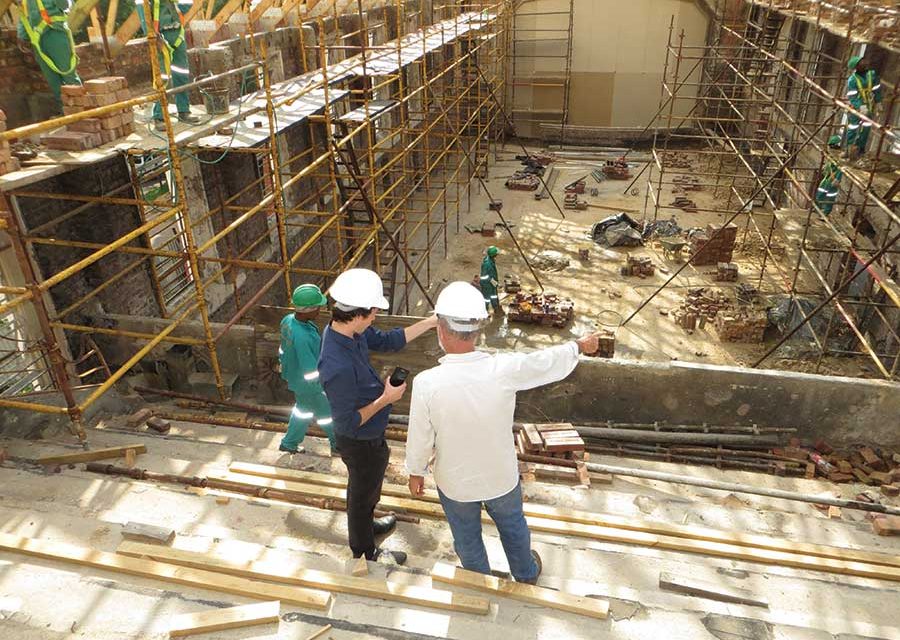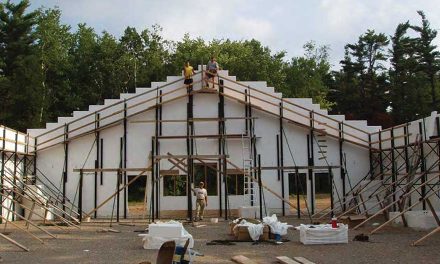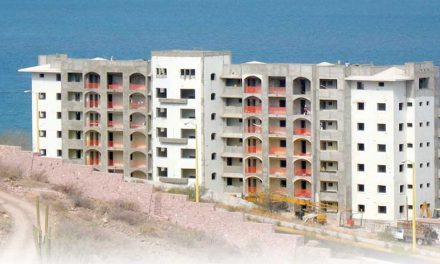By Vanessa Salvia
At the time the Hazeldean Gardens project, profiled on page 16 in this magazine, was being constructed, Ken Williams was working with Fox Blocks as a commercial sales consultant in Ontario, Canada. He has 25 years of experience working in the ICF industry, previously with AAB, Blue Maxx, ARXX, and Logix. He is currently working with Giraffe Bracing (giraffebracing.com) and Legalett Building Systems (legalett.ca) handling advertising, market development, and R&D. Over the years, Williams has entered many projects and received numerous ICF Builder Awards, some of which are projects that have been featured on the front covers of this magazine.
On Hazeldean, Williams worked with the architect to provide guidance on the best assembly solutions, networked them and the owners to a capable ICF erector, and helped navigate building code and fire safety requirements. He attended site meetings early on with the various trades to help them understand some of the things that would be different with an ICF build in order to help keep the project on schedule.
In the case of Hazeldean, the crew was experienced with ICFs but the general contractor was not. “He approached it the same as any other concrete and steel building, which over time created a number of site issues that could have been avoided and took the build into late winter snow conditions”, Williams says. “Luckily, the ICF erector was very experienced and was able to work through it, but that made it a lot more complicated than it needed to be.”
The erector of Hazeldean had used Fox Blocks before, so no training was needed with this crew. But in general, while ICF blocks are similar, each manufacturer has different requirements and installation processes regarding things like how to support formwork around windows and doors, how to lay up and set the first course of blocks on the footer, bracing locations, and recommendations for concrete placement and mix design, etc.
It’s important to have a training day to walk a first-time crew through the basics of the block you’re using, general best practices, give them a chance to practice wall building, and anything else that is relevant to the job at hand.
“Every manufacturer will have some things about installation that are specific to their product,” Williams says. “When a builder that has always worked with one particular product uses another for the first time, they can run into difficulties if they approach it the same way as they did the other ICF. Or it may take longer than expected if they don’t take advantage of time-saving features some ICFs offer.”
Typically, much of the difference between ICF and other forms of construction has to do with scheduling subtrades. With ICF, because they’re an all-in-one wall for the most part, there are certain trades that aren’t needed to come in at the beginning or that need to come in at different times than with other construction methods.
“When erecting ICFs, it includes the formwork, steel reinforcement, concrete placement, superior insulation, furring attachment inside and out, and no vapor or air barrier required, and it’s generally all done by the same crew,” Williams says. “Whereas with other projects, there are installers for the reinforcing steel, installers who put up the formwork and place concrete, installers for the framing, and others for the vapor barrier and air barrier. These are all trades that have to be scheduled at different times.”
One trouble spot with this project was with firestopping and utilities. All the interior walls were ICF as well as the exterior, but holes for ductwork, plumbing, utilities, and things like that were drilled through the walls after they were poured rather than before they were poured, which may be common in regular concrete wall forming but not with ICF.
“They drilled the chases through the insulation afterwards, but you can’t firestop EPS insulation,” says Williams. “The insulation has to be removed from the concrete in the area around the service penetration. With better understanding of the process they could have cast any fire-rated sleeve into the concrete that terminated at the edge of the formwork and they would’ve saved themselves a lot of time and added costs. ICF construction can be learned quickly, because putting it together is simple; It’s the detailing that requires special ‘know how,’ and that is what makes or breaks the budget and separates the best builders from the competition.”













